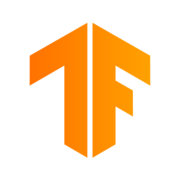Tensor Flow Reviews
Overall Satisfaction with TensorFlow
Our organization was using it when it was 6 months old. It's a open source software by Google pretty robust. We use this AI to solve our healthcare problems when it comes to patient monitoring, appointment cancellation, scheduling, and registration.
Pros
- Multi-GPU support. It works; the documentation is simple and clear. You’ll still need to figure out how to divide and conquer your problem, but isn’t that part of the fun?
- Training across distributed resources (i.e., cloud). As of v0.8, distributed training is supported.
- Queues for putting operations like data loading and preprocessing on the graph.
- Visualize the graph itself using TensorBoard. When building and debugging new models, it is easy to get lost in the weeds. For me, holding mental context for a new framework and model I’m building to solve a hard problem is already pretty taxing, so it can be really helpful to inspect a totally different representation of a model; the TensorBoard graph visualization is great for this.
- Logging events interactively with TensorBoard. In UNIX/Linux, I like to use tail -f to monitor the output of tasks at the command line and do quick sanity checks. Logging events in TensorFlow allows me to do the same thing, by emitting events and summaries from the graph and then monitoring output over time via TensorBoard (e.g., learning rate, loss values, train/test accuracy).
- Model checkpointing. Train a model for a while. Stop to evaluate it. Reload from checkpoint, keep training.
- Performance and GPU memory usage are similar to Theano and everything else that uses CUDNN. Most of the performance complaints in the earlier releases appear to have been due to using CUDNNv2, so TensorFlow v0.8 (using CUDNNv4) is much improved in this regard.
Cons
- Positive Impact- As I mentioned before its open source. Very easy to learn for average programmer/ developer. We were able to design a POC model for understanding the patient appointment cancellation snd reasons behind it in 3 week time frame.
- Negative Impact- If you are using tensor flow for small project it works fine. If you are trying to build a model for face recognition it will be hard to program and train the system. It needs data to be processed before hand cannot learn on the go.
Theano is a Python library and is good for making algorithms from scratch. It is an alternative to Tensor flow. We used tensor flow because it is open source Java source and easy to learn and use.
TensorFlow is developed and maintained by Google. It's the engine behind a lot of features found in Google applications, such as: * recognizing spoken words * translating from one language to another * improving Internet search results Making it a crucial component in a lot of Google applications. As such, continued support and development is ensured in the long-term, considering how important it is to the current maintainers.



Comments
Please log in to join the conversation